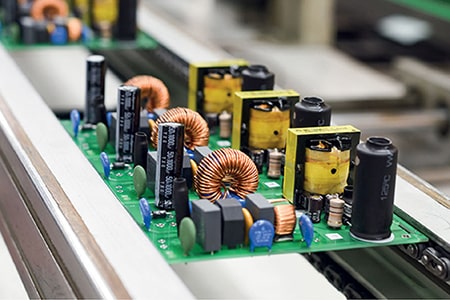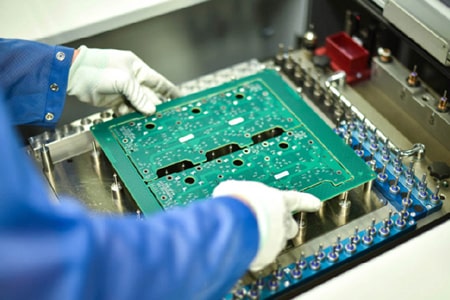What is the difference between aluminum substrate and FR4 board?
Aluminum substrate and FR-4 pcb circuit board are two printed circuit boards made of different materials. They have some significant differences in materials, performance and applications.
Difference between aluminum substrate and FR-4 circuit board
1. Material:
Aluminum substrate:
The base material of aluminum substrate is mainly aluminum-based material, usually aluminum alloy. Its surface is usually coated with an insulating layer with good thermal conductivity, such as alumina (Al2O3).

FR-4 circuit board:
The base material of FR-4 pcb circuit board is a glass fiber reinforced epoxy resin (epoxy resin). Usually, glass fiber cloth is impregnated and coated with epoxy resin to form a composite material.
2. Thermal conductivity:
Aluminum substrate:
Aluminum substrate has good thermal conductivity and is suitable for applications with high heat dissipation requirements, such as LED lighting and electronic power supplies.
FR-4 circuit board:
The thermal conductivity of FR-4 circuit board is relatively poor. It is usually used in general electronic equipment and is not suitable for scenes with high heat dissipation requirements.
3. Mechanical properties:
Aluminum substrate:
Aluminum substrate is relatively hard and has good mechanical properties, so it is suitable for applications that require a certain mechanical strength.
FR-4 circuit board:
FR-4 circuit board is relatively soft, so it is easier to process, but it may not be as good as aluminum substrate in terms of mechanical strength.
4. Cost:
Aluminum substrate:
Due to the high manufacturing process and material cost of aluminum substrate, the cost of aluminum substrate is relatively high.
FR-4 circuit board:
The manufacturing process and material cost of FR-4 circuit board are relatively low, and it is usually an economical choice.
5. Application areas:
Aluminum substrate:
Mainly used in applications that require good heat dissipation performance, such as LED lamps, power modules, automotive electronics, etc.
FR-4 circuit board:
Applicable to general electronic products, such as computer hardware, communication equipment, consumer electronics, etc.
There are obvious differences between aluminum substrate and FR-4 circuit board in terms of thermal conductivity, mechanical properties, cost, etc. The selection of suitable materials depends on the specific application needs and performance requirements.
When to Choose Aluminum PCB vs. FR4 PCB?
Choose Aluminum PCB:
Your project involves high-power components or LEDs.
Heat management is a critical factor.
The product will operate in harsh or high-temperature environments.
Choose FR4 PCB:
Your project has a limited budget.
Heat dissipation is not a primary concern.
You’re working on low-power or general-purpose electronics.
Aluminum PCBs and FR4 PCBs serve different purposes in the electronics industry. Aluminum PCBs excel in heat dissipation and durability, making them a go-to choice for high-power applications. On the other hand, FR4 PCBs offer a cost-effective solution for low-power, general-purpose electronics.
Understanding the strengths and limitations of each type of PCB will help you select the right material for your project. Whether you’re designing an LED lighting system or a consumer electronic device, choosing the proper PCB is crucial to ensuring performance, reliability, and cost-efficiency.
If you’re unsure which PCB is right for your application, feel free to consult with our team of experts. We’re here to help you make the best decision for your project!







